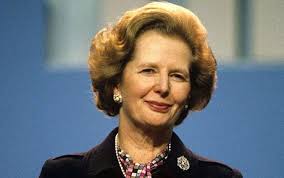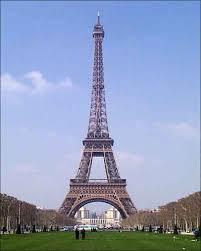Facebook purchases Instagram, a photo sharing application, for $1 billion April 9,2012.

Tuesday, 9 April 2013
Boeing 737 - First flight
The Boeing 737 made its first flight on
April 9, 1967. It is a short- to medium-range twin-engine narrow-body jet airliner. Originally developed as a shorter, lower-cost twin-engine airliner derived from Boeing's707 and 727, the 737 has developed into a family of nine passenger models with a capacity of 85 to 215 passengers.

Monday, 8 April 2013
First female Prime Minister of Britain passed away
Margaret Hilda Thatcher, Baroness Thatcher, the first woman to become British prime minister, has died at the age of 87 on April 8,2013. She was a British politician, the longest-serving (1979–1990) Prime Minister of UK of the 20th century, and the only woman ever to have held the post and she was called the "Iron Lady" for her personal and political toughness.. She was born on 13 October 1925.

Discovery Island opened & closed
Discovery Island is an 11.5 acres island in Bay Lake at Walt Disney World in Bay Lake, Florida .
The island opened as Treasure Island on April 8, 1974, as a place to observe wildlife, and was later renamed Discovery Island
when it was recognized as a zoological park. It closed to the public on
April 8, 1999, but continued to operate until July 9, 1999. 
Sunday, 7 April 2013
World Health Organization established
World Health Day
World Health Day is celebrated on 7 April to mark the anniversary of the
founding of WHO in 1948. Each year a theme is selected for World Health
Day that highlights a priority area of public health concern in the
world. The theme for 2013 is high blood pressure

Saturday, 6 April 2013
1st Modern Olympic games officially opens in Athens
The 1896 Summer Olympics, officially known as the Games of the I Olympiad, was a multi-spot event held in Athens, Greece, from April 6 to 15, 1896. It was the first international Olympic Games held in the Modern era.

Friday, 5 April 2013
National Maritime Day of India
National Maritime Day of India falls on April 5. First celebrated on 5th April, 1964, the day marks the journey of SS Loyalty, the first ship of the Scindia Steam Navigation Company, to the United Kingdom.
Thursday, 4 April 2013
The first successful artificial heart implant
On April 4, 1969, Dr. Denton Cooley, a Houston heart surgeon, performed
the first successful artificial heart implant on a human patient. The
artificial heart was actually developed by Cooley's cross-town rival and
former colleague, Dr. Michael DeBakey, and his team. Cooley's implant
operation turned the rivalry with DeBakey into a full-fledged feud that
lasted for the next 40 years. DeBakey considered it a betrayal and a
theft of his technology.

Father of British Neurology
John Hughlings Jackson who is known as the father of British neurology was born
April 4, 1835, who studies of
epilepsy, speech defects, and nervous-system disorders arising from
injury to the brain and spinal cord helped to define modern neurology. He died Oct. 7, 1911.

Wednesday, 3 April 2013
Luna 10 orbits Moon
The Luna 10 spacecraft was launched towards the Moon
from an Earth orbiting platform on March 31, 1966. The spacecraft
entered lunar orbit on April 3, 1966 and completed its first orbit 3
hours later.
Tuesday, 2 April 2013
John Paul II dies
John Paul II sometimes called Blessed John Paul or John Paul the Great, born 18 May 1920 and died 2 April 2005, reigned as Pope of the Roman Catholic Church from 1978 until his death in 2005. He was the second longest serving Pope in history and the first non Italian since 1523.

Monday, 1 April 2013
April Fools' Day
April Fools' Day is celebrated in many countries on April 1 every year. Sometimes referred to as All Fools' Day, it is widely recognized and celebrated as a day when people play practical jokes and hoaxes on each other.

Gmail was launched
Gmail is a free, advertising-supported email service provided by Google. Users may access Gmail as secure webmail, as well as via POP3 or IMAP4 protocols. Gmail was launched as an invitation-only beta release on April 1, 2004 and it became available to the general public on February 7, 2007.

Sunday, 31 March 2013
The Eiffel Tower
The Eiffel Tower is one of the most famous monuments in the world (324 meters, 10,100 tonnes) it opens on 31 March 1889, it is dedicated in Paris in a ceremony presided over by Gustave Eiffel, the tower's designer, and attended by French
Prime Minister Pierre Tirard, a handful of other dignitaries, and 200
construction workers.It was built for the World Fair, where it was the star attraction.

Saturday, 30 March 2013
Invention of the phototransistor was announce
Friday, 29 March 2013
The first spacecraft to reach the planet Mercury
Thursday, 28 March 2013
The first seaplane
The first seaplane took off from water at Martinques, France. The pilot was Henri Fabre. The first autonomous flight by a hydroplane was made by the French engineer Henri Fabre on March 28, 1910. A seaplane is a powered fixed-wing aircraft capable of taking off and landing (alighting) on water. Seaplanes that can also take off and land on airfields are a subclass called amphibian aircraft.

Wednesday, 27 March 2013
Wilhelm Rontgen
Wilhelm Conrad Röntgen was a German physicist, who Discovered X-rays or Rontgen rays (detected electromagnetic radiation in a wavelength range) on 8 November 1895, He was born on March 27, 1845. In honour of his accomplishments, the IUPAC named element 111, Roentgenium, a very radioactive element with multiple unstable isotopes. He died on
10 February 1923.

Subscribe to:
Comments (Atom)
